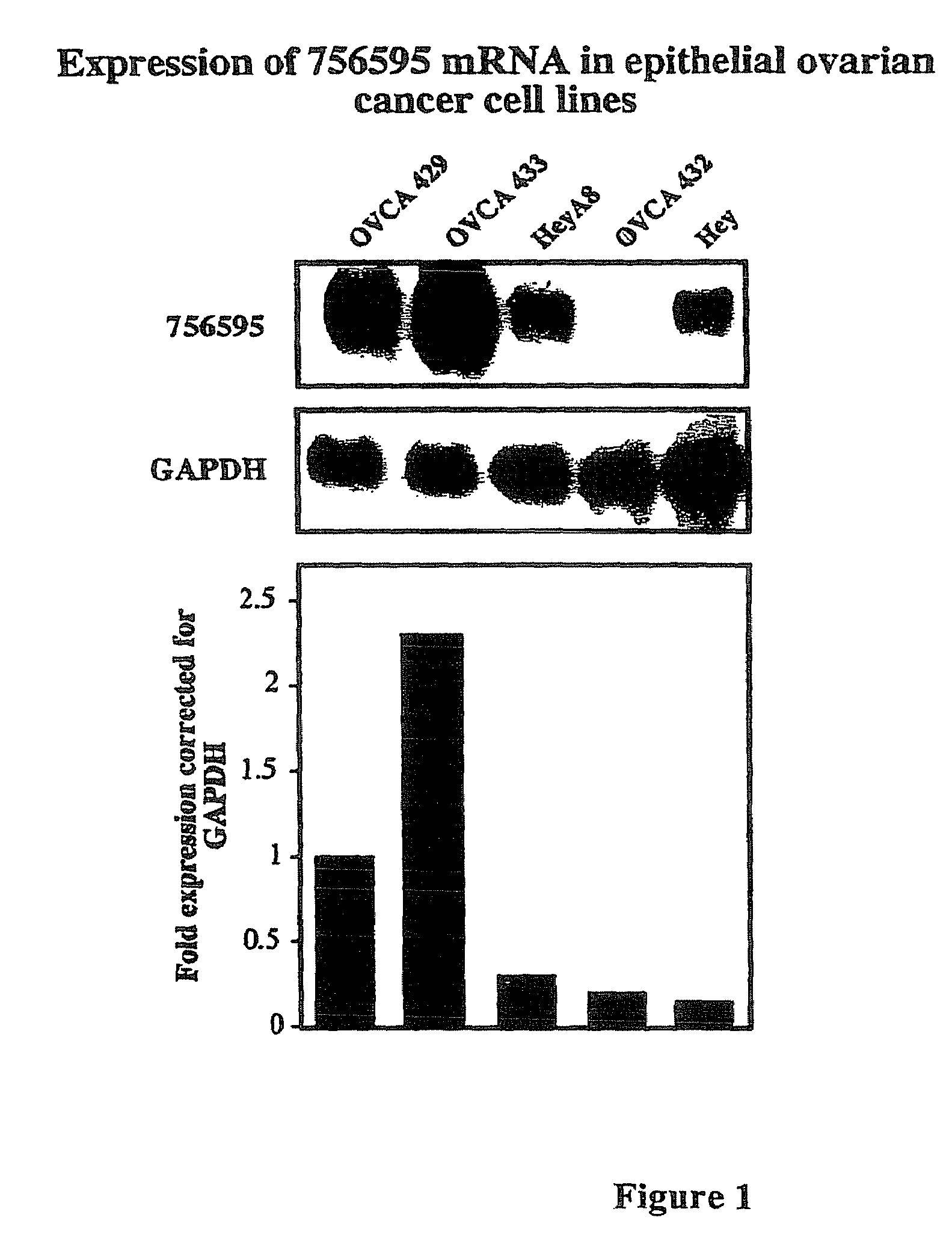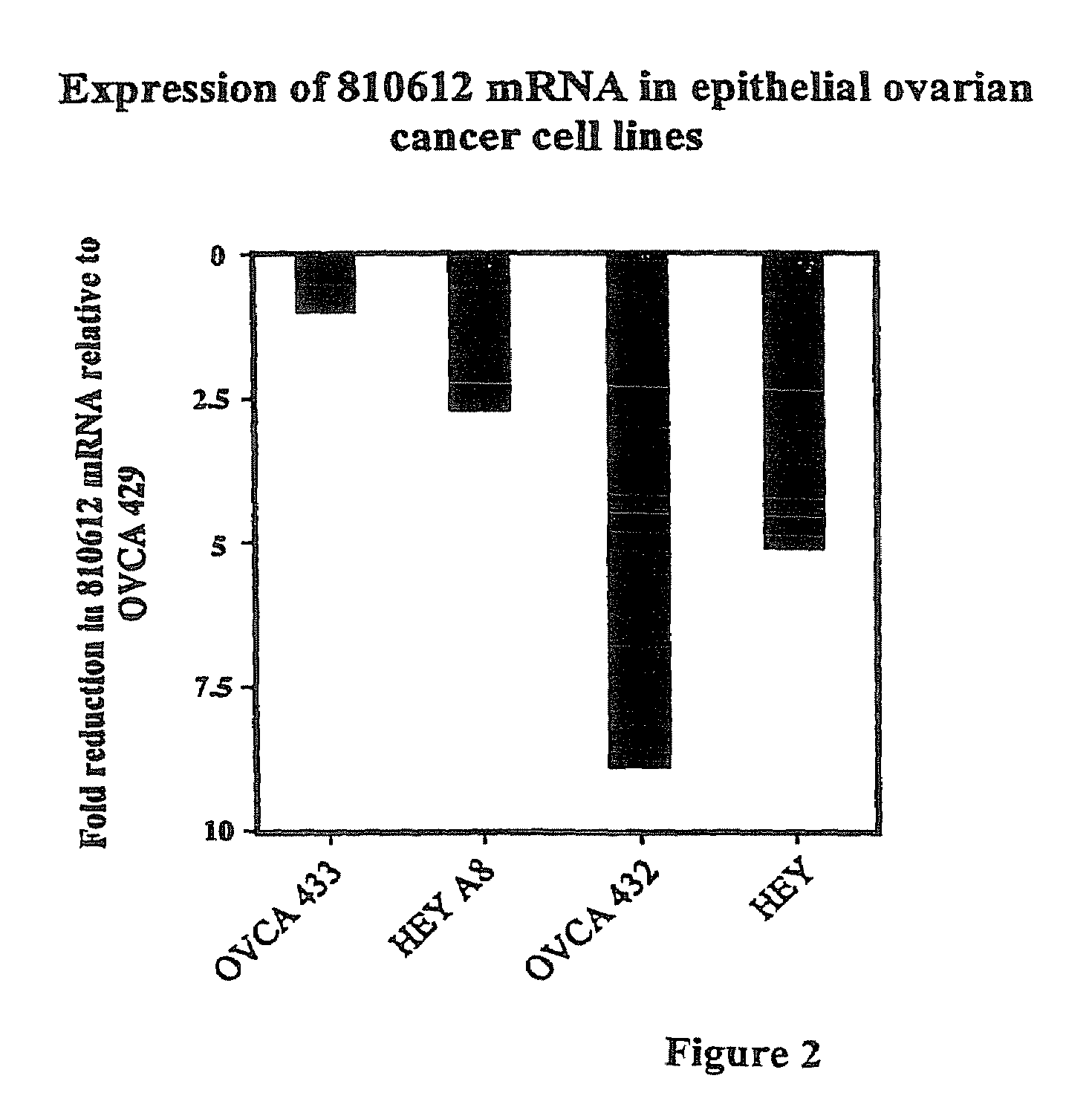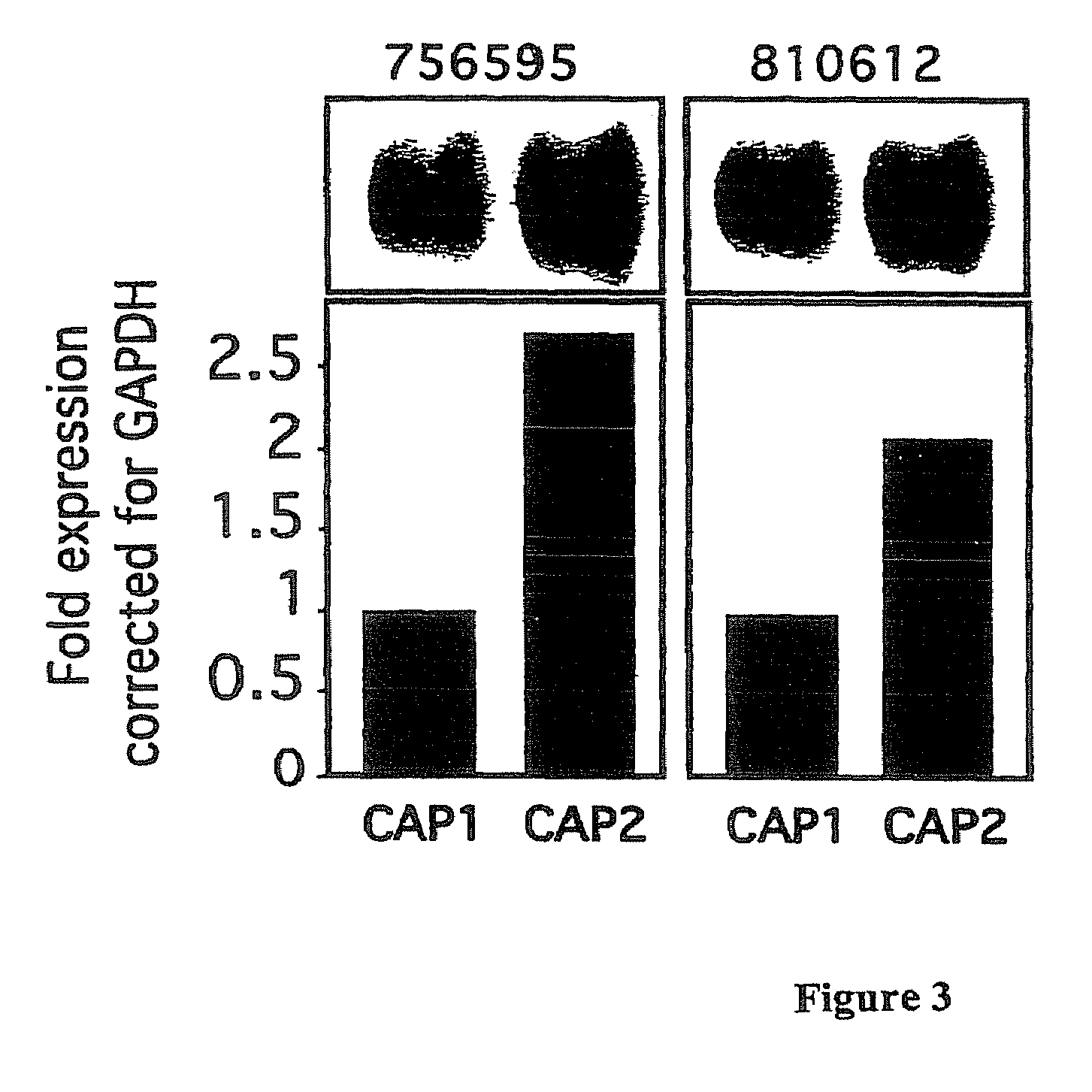Methods for assessing cisplatin resistance, disease progression, and treatment efficacy in ovarian cancer
a technology of ovarian cancer and cisplatin resistance, which is applied in the field of methods for assessing cisplatin resistance, disease progression, and treatment efficacy in ovarian cancer, can solve the problems of poor prognosis, low survival probability, and resistance to currently-available chemotherapeutic agents, and achieves the effect of improving survival rate and improving treatment efficacy
- Summary
- Abstract
- Description
- Claims
- Application Information
AI Technical Summary
Benefits of technology
Problems solved by technology
Method used
Image
Examples
example 1
MTT Cell Proliferation Assays
[0155]Five ovarian cancer cell lines (OVCA 429, OVCA 433, OVCA 432, HEY and HEYA8) were ranked according to their levels of sensitivity to cis-platin using standard MTT cell proliferation assays.
[0156]Cells were grown in Minimal Eagle's Media (MEMα, obtained from Invitrogen Corp., Carlsbad, Calif.), 5% fetal bovine serum (FBS, heat inactivated), 1% antibiotic / antimycotic mixture (Invitrogen). The MTT stock solution (5 mg / mL; CALBIOCHEM, San Diego, Calif.) was prepared by dissolving dye in HBSS (Hank's Balanced Salt Solution), filtering said mixture and stored in 1 ml aliquots at −20° C. One ml of MTT stock was used for every 9 ml of media (total volume is 10 ml). Plates were covered with an opaque covering to protect the cells from light.
[0157]Each cell line was treated with 5, 25, 50, 100 and 200 μM cis-platin for 4, 8 and 24 hours. MTT assays were performed 96 hours after cis-platin treatment on 96 well plates. Media was removed from the cells and 200 ...
example 2
cDNA Micro Array, Northern Blot, and Quantitative Real-Time PCR Analysis
[0160]The cell lines characterized in Example 1 were used to perform micro-array analysis. Cell pellets were collected from each cell line and RNA was isolated from the cells by dissolving the pellets in 1 ml of TRI-Reagent (obtained from Molecular Research Center, Inc, Cincinnati, Ohio) or Trizol (Invitrogen). The samples were then allowed to sit for 5 minutes. Phase separation was accomplished by adding 100 μl of 1-bromo-3-chloropropane (BCP) to the sample. After shaking for 15 seconds, samples were incubated at room temperature for 15 minutes and then centrifuged for 16 minutes at 13,000 RCF at 4-25° C. The supernatant was removed by pipette and placed into a new microfuge tube. RNA was then precipitated by mixing the supernatant with 500 μl of fresh isopropanol, incubated at room temperature for 10 minutes, and centrifuged for 9 minutes at 13,000 RCF at 4-25° C. The supernatant was then removed from the tube...
example 3
In Vitro Testing of SPARC as Therapeutic Target
[0209]SPARC was expressed at the highest levels in the most cis-platin resistant cell line (OVCA 429) compared to the other cell lines tested (FIG. 4). This protein is known in the art to be a calcium-binding glycoprotein that modulates adhesion and can play an important role in tissue remodeling and angiogenesis promoting tumor progression and invasiveness (Ledda et al., 1997, J. Invest. Dermatol. 108:210-214).
[0210]SPARC expression was tested in human Ascites fluid samples obtained from an individual before cyto-reductive surgery and then 9 months following surgery when the patient's tumor had recurred (FIG. 5; the two transcripts observed for SPARC arise due to differential polyadenylation; Ledda et al., 1997, J. Invest. Dermatol. 108:210-214). SPARC expression levels after surgery were greatly increased and correlated with a poor outcome for this patient. This observation was also consistent with findings made by other groups studyi...
PUM
| Property | Measurement | Unit |
|---|---|---|
| total volume | aaaaa | aaaaa |
| total volume | aaaaa | aaaaa |
| total volume | aaaaa | aaaaa |
Abstract
Description
Claims
Application Information
 Login to View More
Login to View More - R&D
- Intellectual Property
- Life Sciences
- Materials
- Tech Scout
- Unparalleled Data Quality
- Higher Quality Content
- 60% Fewer Hallucinations
Browse by: Latest US Patents, China's latest patents, Technical Efficacy Thesaurus, Application Domain, Technology Topic, Popular Technical Reports.
© 2025 PatSnap. All rights reserved.Legal|Privacy policy|Modern Slavery Act Transparency Statement|Sitemap|About US| Contact US: help@patsnap.com



